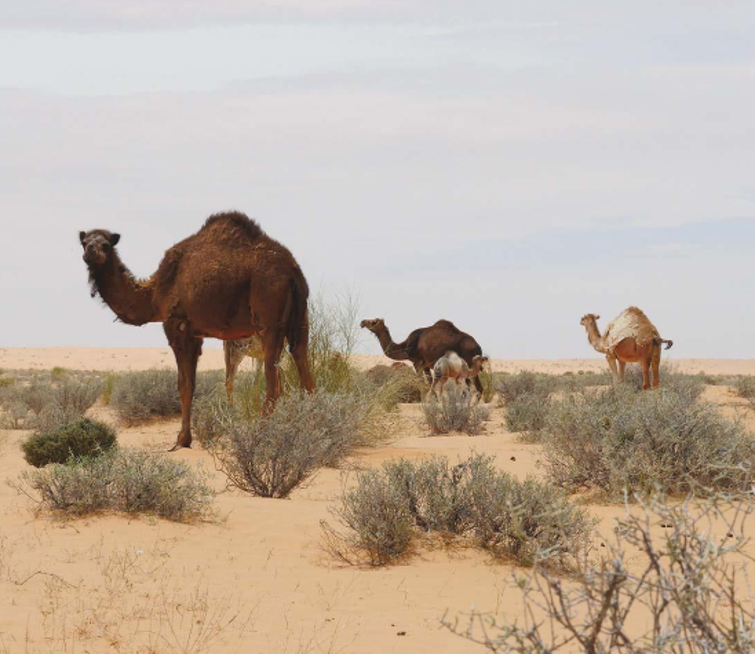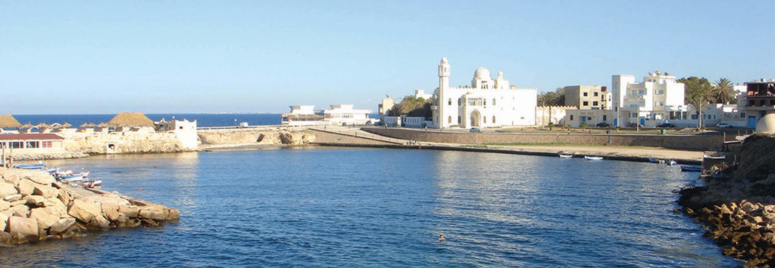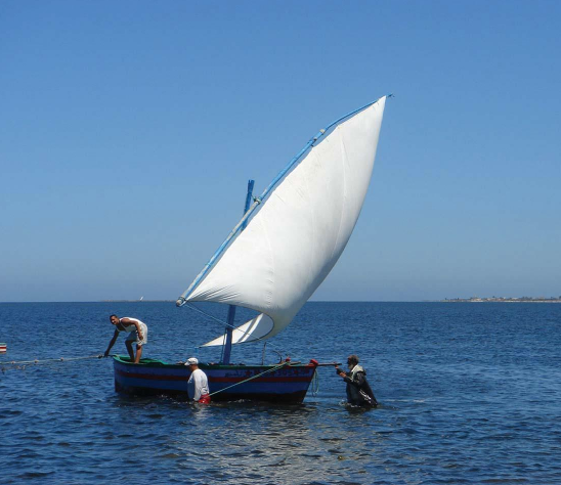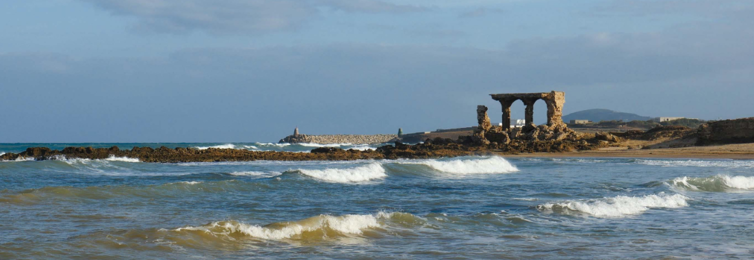North Africa
Sailing in Tunisia
Extracts from the new Royal Cruising Club Pilotage Foundation North Africa pilot book by Graham Hutt explain why Tunisia makes the ultimate base for year-round Mediterranean cruising and overwintering.
Tunisia is the smallest country in North Africa but offers the most varied and established cruising area of all, with many harbours, small fishing ports and marinas to enjoy. From Cap Bon to Djerba, olive groves line the coast and as one journeys south from Monastir, the coastline begins to flatten out and transform into desert, with isolated oases under date palms. Ashore, there is a rich palimpsest of history and culture with extensive Punic and Roman ruins, mountainous Berber villages and Bedouin camps in the desert.

An increasing number of yachtsmen are discovering the delights of cruising the coasts of Tunisia, which welcomes visitors. With a warm climate and miles of wide sandy beaches, it should come as no surprise there has been a surge in UK-flagged yachts basing themselves here to overcome the hurdles of a 90-day Shengen Visa and enjoy year-round cruising in the Med. Looking at a chart makes you realise how perfectly positioned the country is, with easy access to Greece and Croatia in the east or Sardinia and the Balearics to the west.
Tunisian weather is generally moderate. The storms resulting from depressions sweeping through the Mediterranean tend to stay further north, up in the Golfe du Lion and northern Italy. Their effects do not normally reach the east coast with such severity but can affect the coastline from Cap Bon to Bizerte. Summer cruising is usually accompanied by west, northwest or east winds, keeping temperatures down. The Bay of Tunis usually experiences a brief spell of hot humid weather in late July and early August. Winter cruising can be very pleasant in the south, where temperatures remain considerably higher than in Tunis.
TUNISIA’S COASTLINE
The Tunisian coast extends 160M eastward from the Algerian border to Cap Bon, where it turns south for 330M to the border with Libya. The north coast as far as Cap Bon is for the most part mountainous, interrupted by quiet beaches around Tabarka and the Cap Farina headland, with a few off-lying islands and islets. The area is green and fertile; the Cap Bon peninsula in particular has extensive market gardens, fruit orchards and vineyards. Ras ed Drek just south of Cap Bon marks an abrupt change to the more flat and low coast of the Gulf of Hammamet. On the north coast is the marina of Sidi Bou Saïd, 4M north of Tunis, yacht clubs in Bizerte and La Goulette, the combined fishing port and marina of Tabarka, three fishing ports and several anchorages.
The 90 miles of coast from Cap Bon to Monastir becomes increasingly low with long beaches and hills further inland. The major tourist centres of Tunisia are found along this stretch. There are plenty of ports to choose from as you journey south. These include Kelibia, which is a Port of Entry, the marinas of El Kantaoui, the new Port Marina Yasmine, Monastir and the small fishing ports of Beni Khiar and Hergla.

From Monastir onwards, 230M to the Libyan border, the coast becomes even lower with extensive sandy shallows. The tidal range increases to reach a maximum of 1·8m in Gabès. South of Sfax the coast becomes increasingly arid although it is still amazingly green in March with olive groves all the way to Zarzis. A short distance inland the true desert takes over and in Gabès the large oasis of Chenini comes right up to the coast. This area provides a quite different and interesting cruising ground which is worth exploring, especially with a shallow draught yacht, although there are several deep-water ports with well dredged access channels. Except for the island of Djerba, tourism is not obvious and yachts will generally find a warm welcome. Mahdia and La Chebba are friendly fishing ports and Mahdia is a good and useful Port of Entry as well.
The Kerkennah Islands are an interesting cruising ground in themselves and with careful navigation even yachts drawing over 2m can explore some of the ports. With the gently sloping sea bottom and the calming effect of the seaweed, rough seas do not occur and consequently there are a surprising number of places to anchor in and around the banks. Sfax is a large commercial and busy fishing port and the other main ports are Gabès, Houmt Souk on the island of Djerba and Zarzis almost on the border with Libya. The mild winter is a good time to visit this area. With a draught of 1·5m several of the smaller fishing ports from which lateen rigged fishing boats still work the grounds, can be visited.

In recent years Tunisia has built many new fishing ports and existing ports have been enlarged in order to exploit its relatively rich fishing grounds. Today almost every village has its own fishing port, some of them not more than 10 miles apart. These ports generally welcome yachts but entry depends on draught. Many of the smaller ports tend to silt up and are not dredged as long as local boats, which often draw less than a metre, can get in and out. Entrance can also be complicated by excessive growth of seaweed, particularly south of Cap Bon. It is easy to run aground in Tunisia but as the bottom is almost always sand, soft mud or seaweed, the grounding event is seldom serious. Fishermen will usually help for a small reward.
PILOT BOOK EXTRACT
MONASTIR
35° 46’.7N 10° 50’.3E
Monastir is one of the older, more established marinas in Tunisia and a popular place to winter afloat with 300 berths up to 45m. It is also a popular landfall when coming from the east, and a port of entry. The marina has been formed by joining two islands with the shore and protection is excellent in all wind directions. Entry can be made in all weather conditions and the double breakwaters, with good depths in the marina, effectively prevent swell from entering. The quality of services in the marina has been one of the best in Tunisia, and the team of harbourmaster and staff does a good job in maintaining everything to a high standard. They also provide services like hull cleaning with divers and a towing service.
Ashore
The marina complex has shops, apartments and several restaurants. Except during summer months the atmosphere is relaxed and quiet, though the marina is full by the end of October. The nearby islands north of the marina are still in their natural state and the pleasant town centre of Monastir is only five minutes’ walk from the marina.
Excursions inland can easily be arranged and it should be noted that there is a distinct climatic difference from Monastir going south. It is much warmer and not as subject to the constant storms which batter Cap Bon and the north coast during winter. This makes visits to the desert and further inland very pleasant during winter months.
Monastir is a typically ancient Arab town dating from the 10th century with citadel, ribat and the kasbah. The marina, next to the site of Ruspina of the Romans, is a blend of tourist hotels, Islamic shrines and the beautiful old walled Arab quarters. The 10th century mosque is well preserved and used.
The fact that Monastir is the birthplace of former President Bourguiba makes this a town of particular importance. His mausoleum with twin gold domed minarets, just above the port, is without doubt the most spectacular of all new architecture in Tunisia and well worth a visit.
PILOT BOOK EXTRACT
WINTERING IN TUNISIA
Monastir marina and El Kantaoui have been traditionally the most popular wintering spots in Tunisia. They will probably remain the cheapest and early booking for winter is essential. Facilities have drastically improved at the new fishing port at Monastir, which welcomes yachts either on the hard or afloat. The new facilities in Bizerte offer a further choice for wintering. Houmt Souk marina is added to the list. Port Marina Yasmine in the Bay of Hammamet, though more expensive offers another large and safe place both for wintering afloat or ashore. It has excellent facilities, though more expensive. With new marinas being built, the choice will increase.
All are excellent and safe places to leave a yacht, although it may be moved around, especially in Monastir during the winter to accommodate more yachts. A few yachts winter each year in Tabarka, Sidi Bou Said, La Goulette, Bizerte and Kelibia. This is a good alternative to the overstretched main marina and cheaper.

The marinas at Sidi Bou Said, Hammamet, El Kantaoui and Monastir are suitable for laying up under plombage and it is also possible to winter afloat under this scheme but watch visa dates. A person wintering on their yacht in Tunisia is entitled to a visa for as long as they stay in the winter port, but the complications of getting it vary between the marinas. In Sidi Bou Said and El Kantaoui those do it themselves with varying degrees of success.
In Monastir the port captain assists, which makes the procedure run more smoothly. One way around the difficulty is for the individual to temporarily leave Tunisia, as on re-entering, the clock is restarted. There is a residence tax for yachtsmen who stay uninterruptedly in Tunisia for longer than six months. A tax stamp costing TD 45 per person and available from the Recette de Finance, has to be presented upon departure. Obtaining this has the advantage of cheaper travel out of Tunisia. Tickets are double the price for non-residents.
